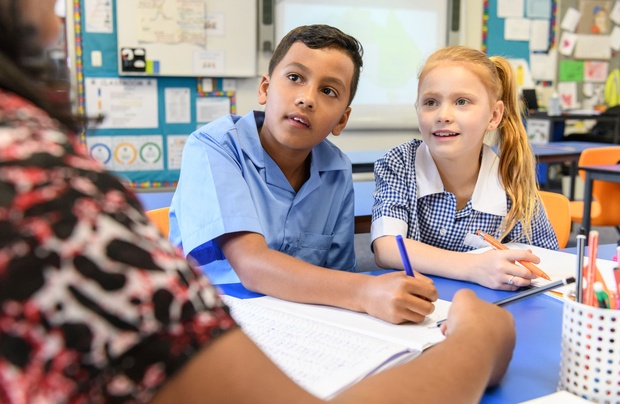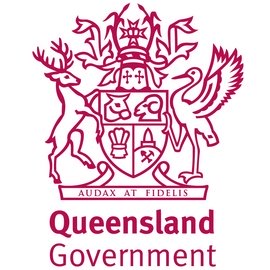Interestingly, the need for new ideas to nurture students’ wellbeing, alongside their development of habits of mind and behaviour to build resilience and improve learning, has led to an expansion in mindfulness interventions.
The initiation of children’s mindfulness programs in Australian schools, and indeed internationally, complements the growth of public interest and research in mindfulness.
In this article, a review of what mindfulness comprises and its use within schools will be made, in an endeavour to provide some clarity for the education sector.
A critical perspective will be adopted, highlighting the potential benefits of mindfulness for students’ wellbeing, alongside some of the related issues.
What is mindfulness?
The word mindfulness originally comes from the Pali word sati, which means having awareness, attention, and remembering.5
In essence, mindfulness practices nurture the possibility for individuals to attend to their present moment experience, to cultivate a particular quality of awareness, commonly defined as “paying attention in a particular way: on purpose, in the present moment and non-judgmentally.”10
Thus, mindfulness manifests a here-and-now oneness, whereby the individual endeavours to guide their thoughts away from contemplation of the past or future, whilst also becoming aware of the process of thinking itself. 9,11
The mindfulness process involves gathering information through the senses, being flexible during the problem-solving process, reflecting on experiences, regulating emotions, and responding to self and others with empathy and compassion.16
The potential benefits of mindfulness
Research on the effects of school-based mindfulness programs builds on decades of studies in adults. In adults, research has clearly shown benefits such as the promotion of psychological wellbeing, alleviation of pain, and a reduction in anxiety and depression.9
School-based international research illuminates how mindfulness programs are associated with improvements in self-regulation, attention, resilience, and social and emotional skills more generally.17, 20
There are also hundreds of studies that focus on children’s perceptions of mindfulness and intervention outcomes in a range of settings such as schools, out-of-school care and clinical settings. Although these are primarily focused on middle and high school students, outcomes have shown positive changes in academic performance, emotional regulation, social skills, anxiety levels and depression and wellbeing. 2,8
Qualitative studies with primary aged children support these findings, noting that mindfulness supports children with concentration, mental focus and clarity in schoolwork, and it develops students’ body awareness, emotions, and their capacity to clearly convey their thoughts and feelings1. Notwithstanding this, the need for more carefully constructed research has been acknowledged for child-focused mindfulness programs. 6
How mindfulness is being used in Australian schools
Mindfulness has been discussed and school-based programs have been funded at a state and national level in Australia.
In particular, mindfulness has inherent links with the ‘Personal and Social Capability’ of the Australian Curriculum, where students are guided to “learn to understand themselves and others, and manage their relationships, lives, work and learning more effectively”.3
In New South Wales, mindfulness is now officially recognised as a fundamental component in enhancing wellbeing in The wellbeing framework for schools.14
Earlier in 2021, 600 Australian rural and regional primary schools were also given access to expanded mental health and suicide prevention support through the Federal Government’s $2.5 million funding for the Smiling Mind evidence-based mindfulness social and emotional learning program.
The NSW Department of Education and Buildcorp Foundation are investing in this program’s implementation in 400 NSW primary schools too.
The Smiling Mind resource has been endorsed by several state education departments, and it includes manuals for educators, student journals, the free Smiling Mind app, and a parent resource guide.
The app contains 20 topics designed to improve students’ personal and social skills, such as how to recognise and manage emotions, how to develop self-awareness, and how to nurture positive communication and relationships.
Furthermore, a range of professional development programs exist, including shorter one-day workshops such as Calm kids - teach mindfulness to students P-12 and more in-depth courses such as Etty-Leal’s Early Learning Centre to Year 12 educators’ Certificate in creative mindful education for children and the Certificate in mindfulness & wellbeing for children.
Mindfulness Matters, a UK-Australia program, offers a number of NESA-approved courses that are based on the principles of Mindfulness-Based Cognitive Therapy (MBCT).
These work from the premise that a teacher needs to develop their own mindfulness practice before they can apply this in an educational context.
Potential issues
When introducing mindfulness programs in schools, there is no one-size-fits-all approach, and the potential issues must be carefully considered.
For some children with a history of traumatic stress, certain mindfulness-based practices are contraindicated.19
It is therefore important for the mindfulness teacher to have contextual knowledge of each participant, and to understand when certain mindfulness practices might not be suitable.
In addition, the teacher leading the mindfulness program needs to be invested in it, be well trained, and have a commitment to their own personal mindfulness practice to avoid a disingenuous approach.
A further consideration is how to avoid tokenistic mindfulness sessions and not disrupt the core business of learning and teaching in an already overcrowded curriculum.
In this sense, the proponents must be extremely clear about the purpose of the mindfulness intervention, and how it might best be implemented during the school day in a proactive, integrated, and meaningful way.
Another matter to note is that even though mindfulness in schools is taught in secular ways, the Buddhist origins of mindfulness might be construed as inappropriate for certain school populations.
Moreover, there have been criticisms of mindfulness in schools in terms of how it is being used as a quick-fix corporatised intervention for students’ wellbeing and there are legitimate concerns as to whether it might be just another passing fad in education.18
Possibilities: best practice, where to next?
Taking into account the international research, mindfulness-based practices can have a positive impact on psychological wellbeing, and emotional and social skills in children and young people.
Teachers who are well trained in mindfulness have the capacity to help students to develop mental agility and follow alternative routes when responding to challenging events.
This allows students to monitor and reduce their reactive behaviours that can often heighten their stress levels and interfere with their learning processes.
Quality mindfulness-based training in schools is feasible, but it is vital that those who participate in it are carefully screened and a whole-school approach is adopted.
If a school does not intend to invest in staffing, resources and ongoing support for a mindfulness-led approach, then it might be best to adopt more traditional approaches to wellbeing that have been tried and tested rather than jumping on the mindfulness bandwagon.
References
1. Ager, K., Albrecht, N. J., & Cohen, M. (2015). Mindfulness in schools research project:
Exploring students’ perspectives of mindfulness - What are students’ perspectives of
learning mindfulness practices at school? Psychology, 6(7), 896-914. https://doi.org/10.4236/psych.2015.67088
2. Arthurson, K. (2015). Teaching mindfulness to year sevens as part of health and personal development. Australian Journal of Teacher Education, 40(5), 27-40.
https://doi.org/10.14221/ajte.2015v40n5.2
3. Australian Curriculum, Assessment and Reporting Authority [ACARA]. (2021). Personal and social capability (Version 8.4). Author. https://www.australiancurriculum.edu.au/f-10-curriculum/general-capabilities/personal-and-social-capability/
4. Berger, C., Alcalay, L., Torretti, A., & Milicic, N. (2011). Socio-emotional well-being and academic achievement: Evidence from a multilevel approach. Psicologia: Reflexão E Crítica, 24(2), 344-351. https://doi.org/10.1590/S010279722011000200016
5. Bodhi, B. (2000). A comprehensive manual of Adhidhamma. BPS Pariyatti.
6. Britton, W. B., Lepp, N. E., Niles, H. F., Rocha, T., Fisher, N. E., & Gold, J. S. (2014). A randomized controlled pilot trial of classroom-based mindfulness meditation compared to an active control condition in sixth-grade children.
Journal of School Psychology, 52(3), 263-78. https://doi.org/10.1016/j.jsp.2014.03.002
7. Corporate Zen. (n.d.). Calm kids - Teach mindfulness to students. Corporate Zen. http://www.corporatezen.com.au/calm-kids---teach-mindfulness-to-students.html
8. de Carvalho, J. S., Pinto, A. M., & Marôco, J. (2017). Results of a mindfulness-based social-
emotional learning program on Portuguese elementary students and teachers: A quasi-experimental study. Mindfulness, 8(2), 337-350. https://doi.org/10.1007/s12671-016-0603-z
9. Francis, N., & Lu, C. (2009). The conceptual framework of the Eastern approach in physical education: Ancient wisdom for modern times. ACHPER Healthy Lifestyles Journal, 56(2/3), 23-27.
10. Kabat-Zinn, J. (1994). Wherever you go, there you are: Mindfulness meditation in everyday life. Hyperion.
11. Kabat-Zinn, J. (2003). Mindfulness-based interventions in context: Past, present, and future. Clinical Psychology: Science and Practice, 10(2), 144-156. https://doi.org/10.1093/clipsy.bpg016
12. Meditation Capsules. (n.d.). Certificate in creative mindful education for children. For ELC-yr12 educators, allied professionals and meditation teachers. Meditation Capsules. https://meditationcapsules.com/accredited-mindfulness-pd
13. Mindfulness Matters. (2021). Courses. Mindfulness Matters Australia. https://mindfulnessaustralia.net.au/
14. NSW Department of Education and Communities. (2015). The wellbeing framework for schools. Author.
https://education.nsw.gov.au/content/dam/main-education/student-wellbeing/whole-school-approach/Wellbeing_Framework_for_Schools.pdf
15. Peaceful Kids. (n.d.). Certificate in mindfulness & wellbeing for children. Peaceful Kids Mindfulness & Positive Psychology Program. https://www.peacefulkids.com.au/certificate-program.html
16. Roeser, R. W., Skinner, E., Beers, J., & Jennings, P. A. (2012). Mindfulness training and teachers' professional development: An emerging area of research and practice. Child Development Perspectives, 6(2), 167-173. https://doi.org/10.1111/j.1750-8606.2012.00238.x
17. Rempel, K. D. (2012). Mindfulness for children and youth: A review of the literature with an argument for school-based implementation. Canadian Journal of Counselling and Psychotherapy, 46(3), 201-220.
18. Ricci, C. (2015). Mindfulness very gently moving around the world's classrooms. The Age. https://www.theage.com.au/education/mindfulness-very-gently-moving-around-the-worlds-classrooms-20150406-1mf5wg.html
19. Shapiro, S. L., & Carlson, L. E. (2009). The art and science of mindfulness: Integrating mindfulness into psychology and the helping professions. American Psychological Association. https://doi.org/10.1037/11885-000
20. Viafora, D. P., Mathiesen, S. G., & Unsworth, S. J. (2015). Teaching mindfulness to middle school students and homeless youth in school classrooms. Journal of Child and Family Studies, 24(5), 1179-1191. https://doi.org/10.1007/s10826-014-9926-3















